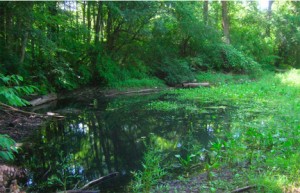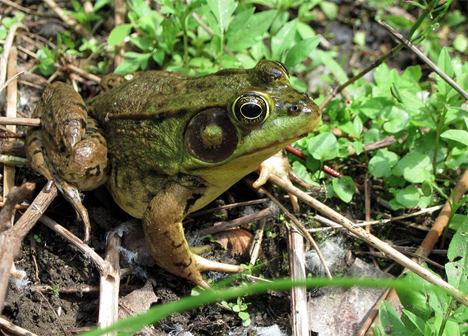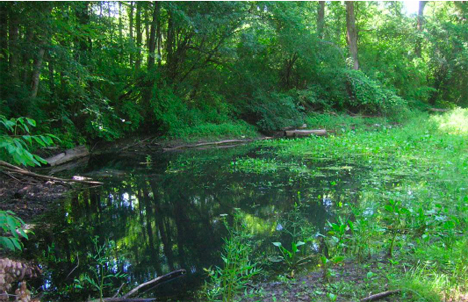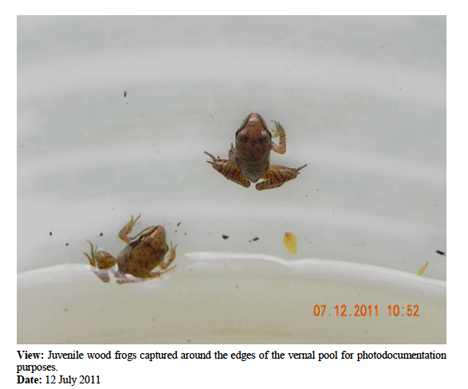March 10, 2011
By Mickey Friedman
Having grown up on city streets, I wouldn’t have known a vernal pool if I had fallen into one.
Today I’m writing about vernal pools because they are central to the battle about how best to clean toxic PCBs from the Housatonic River.
Vernal pools are “ephemeral fresh-water wetlands which do not hold water permanently and are free of breeding populations of fish.” (MA Fisheries and Wildlife). Fresh water pools formed by rain and snow during the autumn and winter, but dry at other times of the year. Because there are no predator fish, many important species are born in vernal pools. These species cannot live without these critically important vernal pools. (2011 Phase 4C Floodplain Property Vernal Pool Monitoring Summary, p.1: (http://www.epa.gov/region1/ge/thesite/floodplain/reports/phase4/501650.pdf)
We’re talking about invertebrates like fairy shrimp (don’t tell Rick Santorum), daphnia, fingernail clams, water striders, and caddishflies. These inveterbrates don’t have backbones and make up 97% of all animal species. Then there are amphibians like green frogs, wood frogs, and salamanders. These “indicator species” are easy to collect and tell us what’s in the water and how it is effecting animal life.
GE and the Commonwealth of Massachusetts and the Berkshire County League of Sportsmen believe a rigorous cleanup of PCBs – with the kind of systematic dredging that took place in the Pittsfield section of the river – will hurt the river more than help it.
GE wrote: “when it comes to the Rest of River, less really is more. The least intrusive approaches to cleaning up river sediment and floodplain soil … are far more likely to achieve that goal without “destroying a river to clean it.” (CMS, Executive Summary, 1-2, (http://www.epa.gov/region1/ge/thesite/restofriver/reports/cms/472605.pdf)
Kenneth Kimmell, The Commissioner of the Massachusetts Department of Environmental Protection (DEP), declared that the Rest of the River “has a remarkable profusion of rare species, plants and animals, vernal pools, unique soils, unique habitats … And so, one simply has to be very carefully about doing more harm than good and destroying a river in order to save it.” (http://www.wbur.org/2011/07/08/housatonic-river)
The Sportsmen told the EPA: “Don’t destroy the river to fix it.”
The United States Environmental Protection Agency (EPA) and local environmental organizations believe a comprehensive remediation can remove almost all of the toxic PCBs. With a committed restoration process, the River can be cleaned and healed. The Housatonic River Initiative believes the Housatonic can once again be “a fishable, swimmable river.”
The don’t-destroy-the-river folks believe the GE/EPA cleanup of the first two miles of the river in Pittsfield caused ecological devastation. Mark Jester of the Berkshire County League of Sportsmen says the first two mile cleanup “exacted a heavy price and the river as we knew it no longer exists there.” (http://www.berkshireoutdoors.com/wp-content/uploads/2011/01/CountyLeagueLetter.pdf)
And they all have spent time and energy talking about vernal pools. About the vernal pools that were destroyed in the two mile cleanup and the vernal pools that will be destroyed if the EPA starts messing up the Rest of the River. As the vernal pools go, so goes the River.
In GE’s film, “The Housatonic: The Fate of a River,” Professor Robert Brooks of Pennsylvania State University, declares EPA’s restoration of a vernal pool a failure: “Basically we’ve replaced the kinds of amphibians that should be here. This summer we had an undesirable amphibian, green frogs, completely lining the shoreline, and they’re a predator on the larvae, the tadpoles, of the amphibians we like to see, which are the spotted salamander and wood frog. So the nature of the pond is completely changed through the excavation and cutting of the trees along the edges.” (http://www.thebeatnews.org/transcription-ge-video/)
Because of the two mile cleanup, more bad green frogs, fewer good wood frogs.
Because the Commonwealth doesn’t believe the EPA can restore vernal pools, it doesn’t want to clean large sections of the Rest of the River: “The Commonwealth does not propose to remediate the amphibian areas, because this would cause more ecological harm than benefit. We believe that restoration of these vernal pools will not result in the actual replication of the vernal pools and associated amphibian communities that existed prior to the removal of the pools.” (Commonwealth of Massachusetts, CMS Comments, p. 11. (http://www.epa.gov/region1/ge/thesite/restofriver/reports/cms/477441.pdf)
GE went even further in its comments to EPA National Remedy Review Board on June 30, 2011. All of the scenarios that called for substantial removal of PCBs would irreparably damage the vernal pools: “These activities would cause an immediate loss, in all or parts of these pools, of the amphibian and other species that depend on vernal pools for breeding. They would also cause alterations in the hydrology, vegetation, and soil conditions of these vernal pools. Where these characteristics are disturbed, efforts to reproduce them, especially their hydrology, are highly susceptible to failure. As a result, there would probably be a permanent change in the hydrology and soil of the affected pools.” (http://www.epa.gov/region1/ge/thesite/restofriver/reports/cms/487369.pdf)
But wait, thanks to a new document, we now know with certainty that we can dredge PCBs from the Housatonic, then carefully restore a vernal pool in the floodplain. We know this because GE performed extensive tests between April and June 2011 on a restored vernal pool in the remediated section of the first two miles.
GE “documented the presence of fairy shrimp, a full breeding chorus of wood frogs, approximately 100 wood frog egg masses, wood frog tadpoles estimated to number into the thousands, and transforming juveniles in the pool with tail remnants, any one of which satisfies the biological criteria for vernal pool certification …” (http://www.epa.gov/region1/ge/thesite/floodplain/reports/phase4/501650.pdf)
Forget the rhetoric and deception. This vernal pool is alive and well. With the help of the EPA, GE brought a good thing back to life. Now it’s time to clean the Rest of the River.
_________________________________________________________________________________
An earlier version of “GE Brought A Good Thing To Life” appeared in the Berkshire Record, March 8, 2011.
The EPA has prepared several documents you may find interesting. You can download them here:




